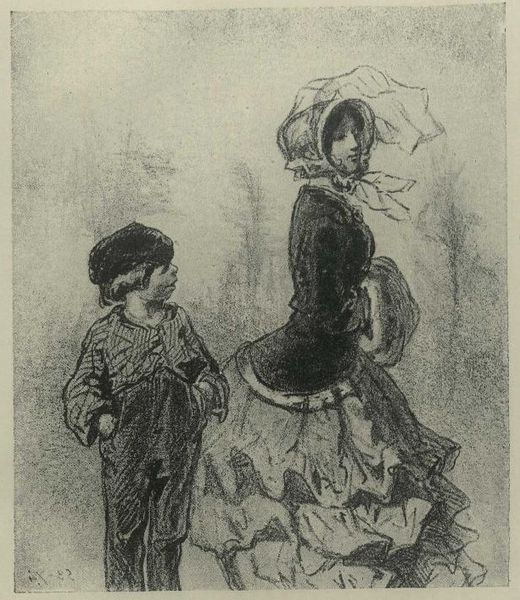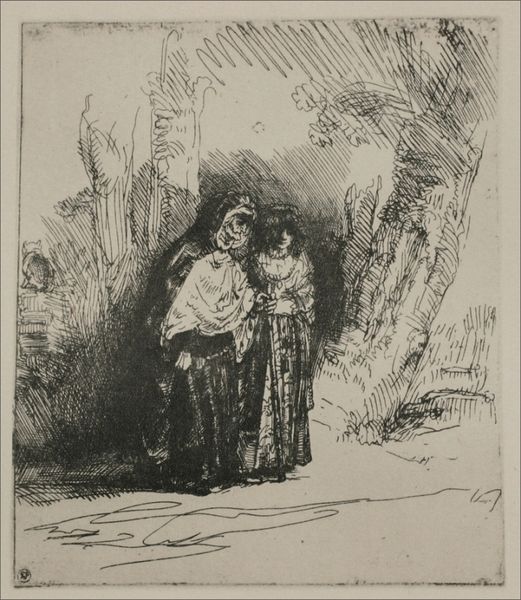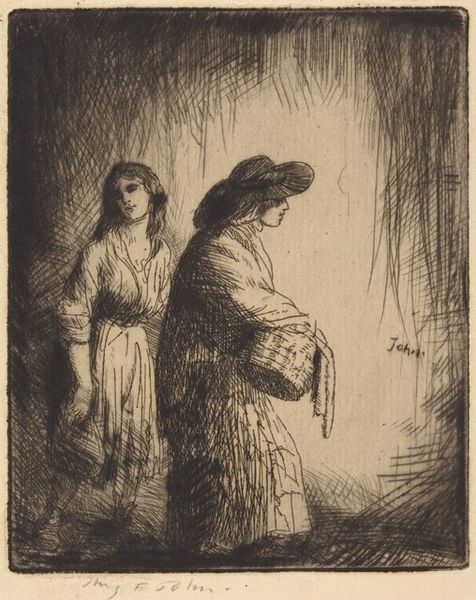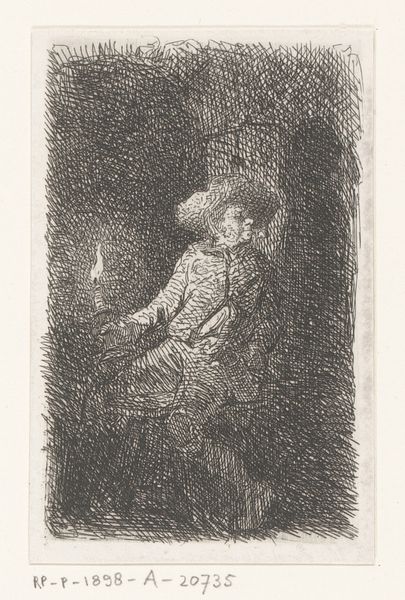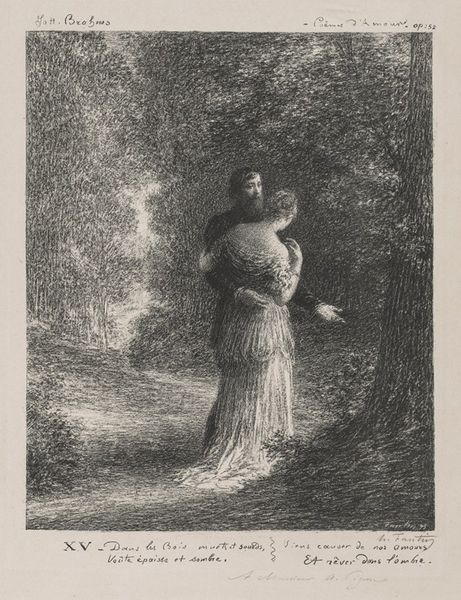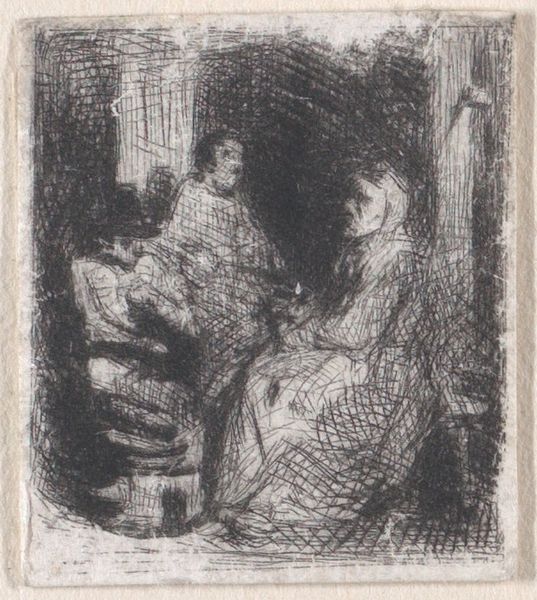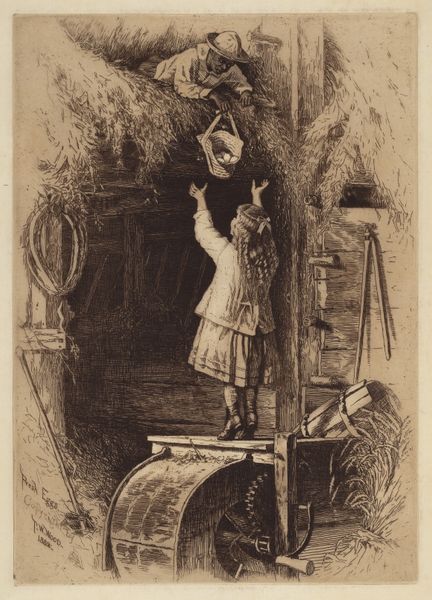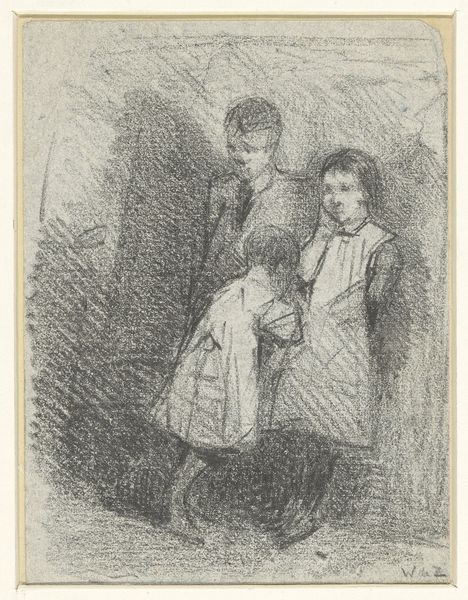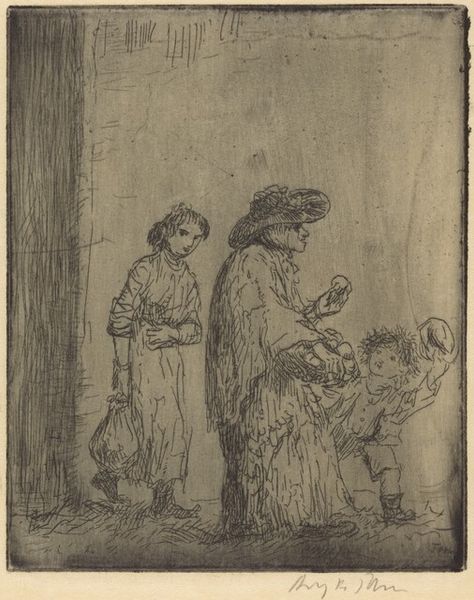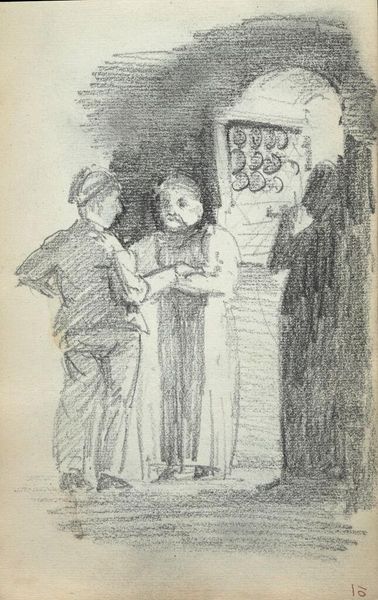
drawing, lithograph, print, graphite
#
portrait
#
pencil drawn
#
drawing
#
lithograph
# print
#
symbolism
#
graphite
Copyright: Public domain
Curator: This drawing, entitled "Two women lithograph", is a work by Théophile Alexandre Steinlen. It appears to be executed using graphite and lithographic printing techniques. What are your initial thoughts? Editor: The immediate impression is somber. It feels like peering into a hazy memory or dream. The figures are emerging from a darkened space, the composition dense with texture created through hatching marks. Curator: The medium itself – lithography combined with graphite – speaks volumes about its creation. Lithography as a process allowed for reproduction, but the artist's hand, rendered in graphite, imbues it with individuality and intimacy. These weren't mass-produced in the way one might think, there’s still a level of material and artisanal craft present. Editor: That interplay between reproducibility and the unique touch is quite fascinating, particularly in considering the art market and access to images in the late 19th century. What did it mean to circulate an image of this kind and who was it for? Curator: Indeed. This could reflect broader social issues of access and distribution within the art world itself, since printmaking, in its very nature, served a wider and more common population than oil on canvas would serve. What of the imagery then, how does the artwork interact with popular social politics? Editor: There's a palpable psychological depth conveyed, especially in their faces and ornate headwear. They seem withdrawn and dignified amidst what I assume might be a statement about the time in which it was created and reproduced as Steinlen could potentially offer new visibility into these societal segments. Curator: Steinlen's technique emphasizes their clothes; it would have alluded to status and class which were highly important at this time, it also indicates a subtle focus on the details of production. A dress signifies time and labour, the kind these woman potentially lack which impacts class structure. Editor: I appreciate that connection between the making of art and the women being represented. Looking closer, there is also a darker shape barely represented towards the left side; perhaps alluding to unseen, yet ominous aspects of social constraints. Curator: Agreed, these additions act as an undercurrent, something both veiled and threatening which ties into your earlier remark about visibility. What better way to hide these social constructs by masking it with beauty, or at least representing these in beautiful clothes! Editor: The social and material considerations bring the print to life, beyond just the visual, impacting societal issues that were represented during this time in our social-political views of class structure and womanhood. Curator: Exactly. I'm struck once more by the deliberate handcraft amidst the promise of mass dissemination through lithography and can't help but appreciate the artist’s craftsmanship as it impacts historical context.
Comments
No comments
Be the first to comment and join the conversation on the ultimate creative platform.
